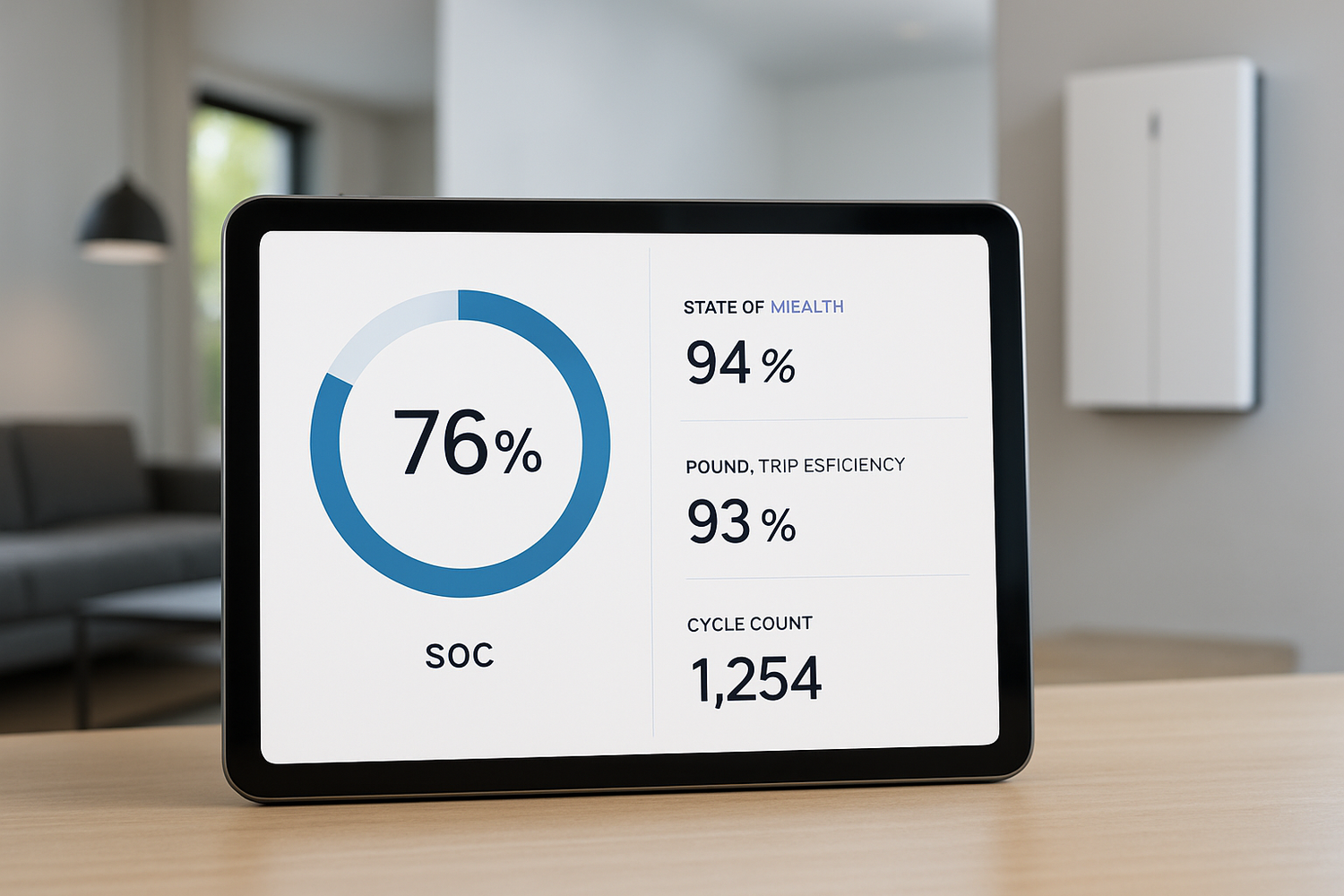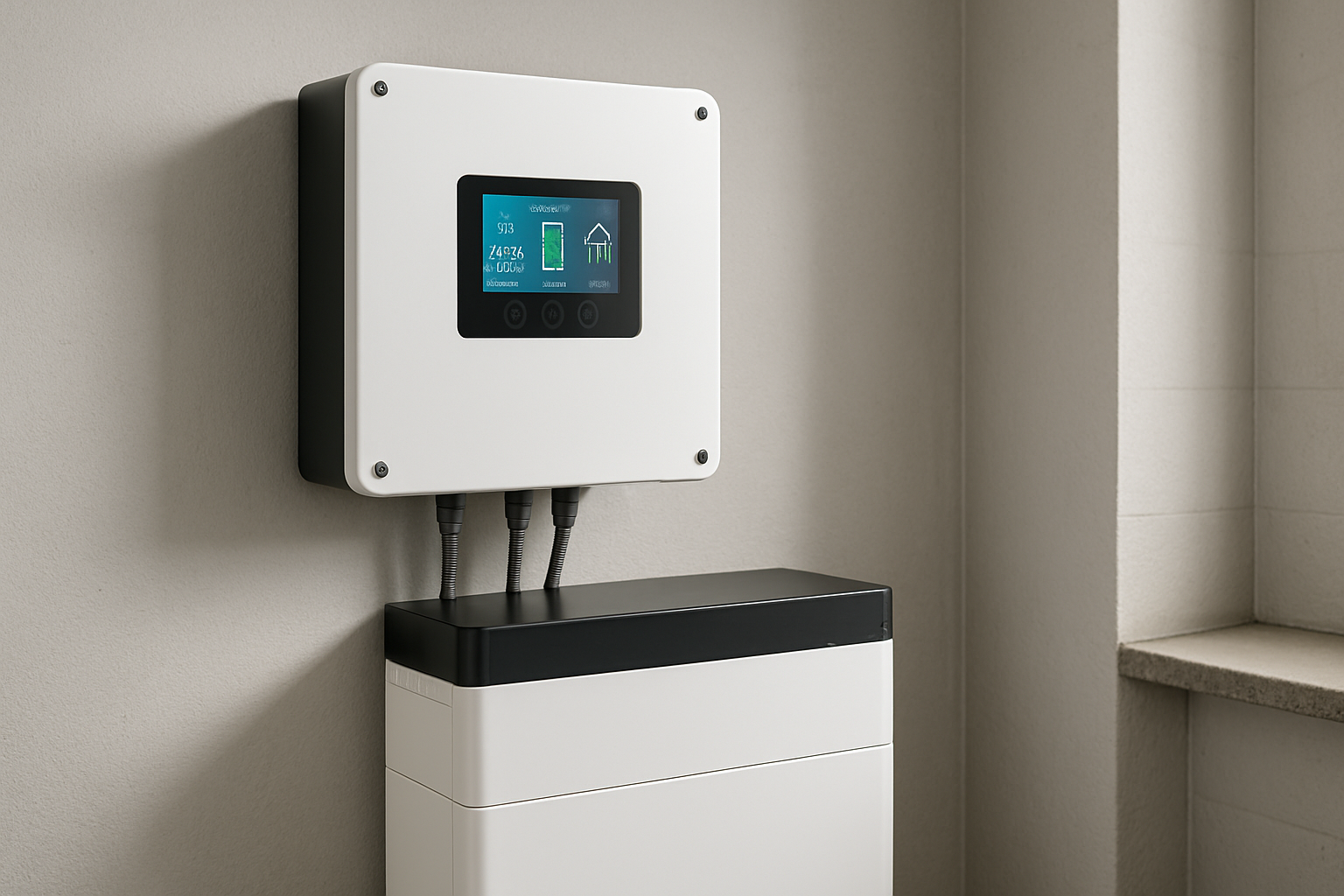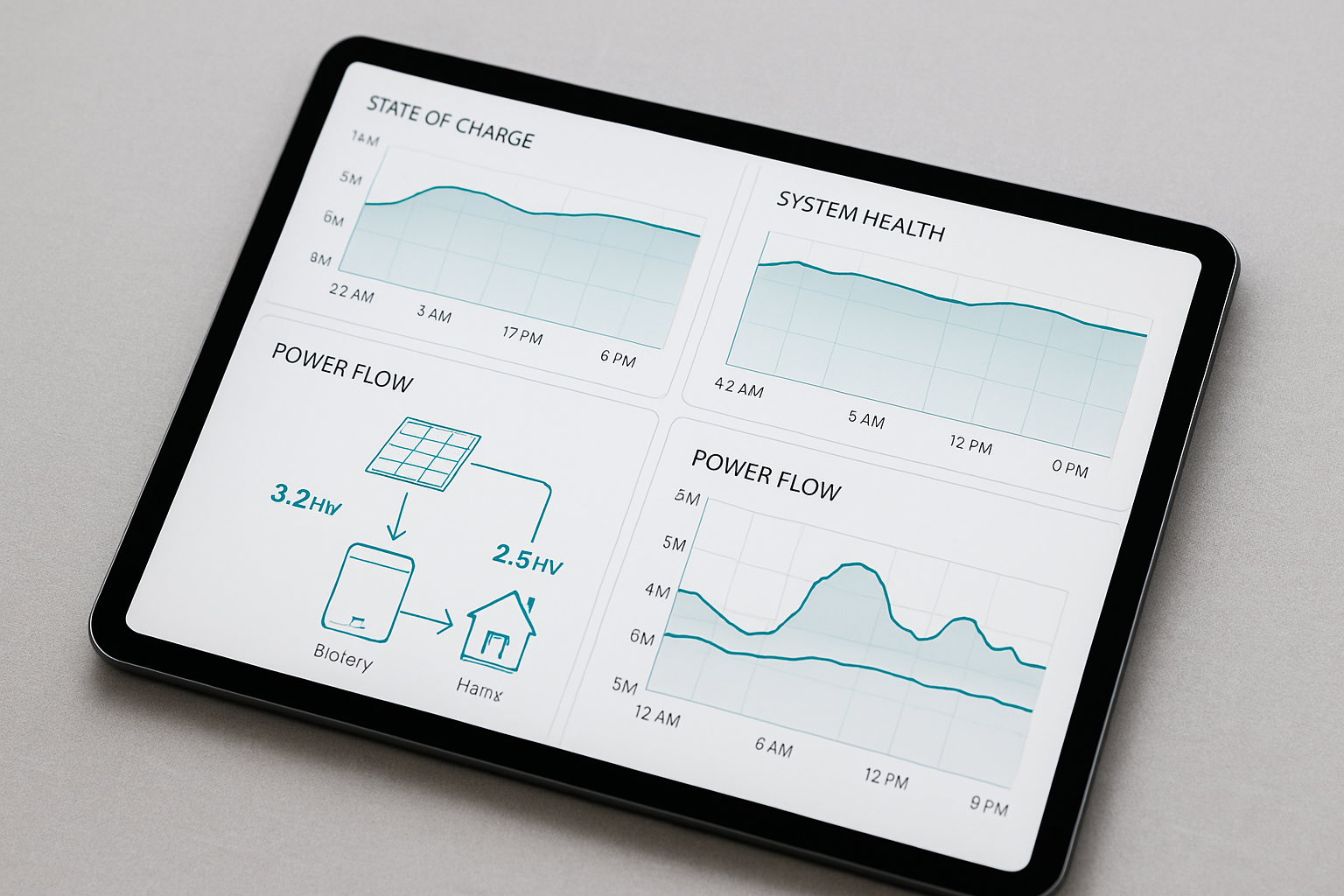Investing in a lithium-ion solar battery for your home energy storage system is a significant step toward energy independence. To maximize its value and ensure a long, reliable service life, it’s crucial to understand how it’s performing. Effective hybrid system performance monitoring goes beyond simply checking if the lights are on. It involves tracking specific solar battery key performance indicators (KPIs) that reveal the health and efficiency of your investment. By keeping an eye on these core metrics, you can proactively manage your energy, extend your battery’s lifespan, and ensure you get the most out of your solar power system.
1. State of Charge (SoC): Your Battery’s Fuel Gauge
Think of State of Charge as the fuel gauge for your battery. It represents the current level of charge in your battery as a percentage of its total capacity. A 100% SoC means the battery is full, while 20% means it’s nearly empty. This is one of the most fundamental lithium-ion solar battery metrics you will interact with daily.
Why It Is Critical
Monitoring SoC is vital for daily energy management. It helps you decide when to run heavy appliances on stored solar power versus pulling from the grid. More importantly, it helps protect the battery. Consistently draining a lithium-ion battery to 0% or keeping it at 100% for extended periods can accelerate degradation. Most modern Battery Management Systems (BMS) prevent extreme states, but operating within an optimal range is best practice for longevity.
Practical Monitoring and Best Practices
You can easily check your battery’s SoC through your solar inverter’s display panel or a dedicated mobile app. For optimal battery health, many experts recommend keeping the daily SoC between 20% and 80%. This practice, known as partial cycling, reduces stress on the battery's chemical components and can significantly extend its operational life.
2. State of Health (SoH): The Long-Term Vital Sign
While SoC tells you the charge level today, State of Health (SoH) tells you how well your battery can hold a charge over its lifetime. It’s a measure of the battery's current condition compared to its brand-new state, expressed as a percentage. A new battery starts at 100% SoH. Over time, as the battery ages, its ability to store energy diminishes, and its SoH declines.
Factors Affecting SoH
Several factors influence a battery's long-term health, including the number of charge-discharge cycles, operating temperatures, and how deeply it is discharged. High temperatures and frequent deep discharges are two of the primary causes of accelerated SoH degradation. A sophisticated BMS will manage these factors to protect the battery, but user awareness is key.
Interpreting SoH Data
SoH is a long-term indicator of wear. You won’t see it change day-to-day, but tracking it quarterly or annually provides insight into its aging process. Most manufacturers consider a battery to have reached the end of its useful life for energy storage applications when its SoH drops to around 70-80%. At this point, it can no longer hold enough energy to be effective for its original purpose.
3. Depth of Discharge (DoD): How Deep You Go
Depth of Discharge refers to the percentage of the battery's total capacity that has been used. It is the direct inverse of SoC. For example, if a 10 kWh battery has 3 kWh of energy remaining, its SoC is 30%, and its DoD is 70%. This is one of the most critical battery health monitoring metrics because it directly correlates with the battery's lifespan.
The Link Between DoD and Lifespan
There is an inverse relationship between how deeply you discharge your battery and how many cycles it will last. A shallower discharge puts less strain on the battery. A lithium iron phosphate (LiFePO4) battery might provide thousands of cycles at 80% DoD, but that number can increase significantly if it is consistently cycled at only 50% DoD. According to the IEA, optimizing battery use is key to reducing the overall operating costs of PV hybrid systems, and managing DoD is a primary way to achieve this. As noted in a report by IEA-PVPS Task 18, focusing on battery data is crucial because it is the most cost-intensive component.
Optimizing DoD for Longevity
You can set a maximum DoD by configuring a minimum SoC level in your solar system’s settings. For instance, setting a minimum SoC of 20% limits your DoD to 80%. This simple adjustment prevents the battery from being drained too deeply, which is a foundational strategy for maximizing its service life.
| Depth of Discharge (DoD) | Estimated Cycle Life |
|---|---|
| 100% | ~3,000 cycles |
| 80% | ~5,000 cycles |
| 50% | ~8,000+ cycles |
4. Cycle Life: The Battery’s Endurance
A charge cycle is one complete charge and discharge of the battery. Cycle life is the total number of these cycles a battery can endure before its capacity degrades to a specific endpoint—typically an SoH of 80%. Manufacturers provide a cycle life rating under specific conditions, such as '5,000 cycles at 80% DoD'.
Understanding Cycle Life Ratings
This metric helps you understand the expected lifespan of your battery under normal use. A higher cycle life rating indicates a more durable and longer-lasting battery, which is a hallmark of premium LiFePO4 chemistries. When comparing batteries, always check the DoD associated with the cycle life rating for an accurate comparison.
Maximizing Your Cycles
To get the most cycles from your battery, you should manage the factors that cause degradation. This includes operating the battery within its recommended temperature range and, most importantly, using shallower discharge cycles. For a comprehensive overview of how these factors influence battery longevity, the Ultimate Reference for Solar Storage Performance offers valuable data, showing how strategic management of discharge depth can significantly extend your battery’s operational life.
5. Round-Trip Efficiency: How Much Energy You Keep
Round-trip efficiency measures the amount of energy you get out of a battery relative to the amount of energy put into it. Some energy is always lost as heat during the charging and discharging process due to internal resistance. A higher round-trip efficiency means less wasted energy.
What’s a Good Number?
Modern lithium-ion batteries, particularly LiFePO4 models, are known for their high efficiency. They often boast round-trip efficiency ratings of 95% or higher. This means for every 10 kWh of solar energy you use to charge the battery, you can expect to get at least 9.5 kWh back. This high efficiency is crucial for maximizing the use of your generated solar power and is a key advantage over older battery technologies. According to a study by the International Renewable Energy Agency (IRENA), enhancing grid flexibility through efficient storage is increasingly important.
Why Monitor It?
While round-trip efficiency is generally stable, a noticeable decline can signal an issue. It could indicate that the battery is aging, operating in extreme temperatures, or that there is a problem within the broader system. Tracking this aspect of solar power system efficiency ensures that your system is not wasting precious solar energy.
Proactive Management for Lasting Performance
Understanding these five key metrics—SoC, SoH, DoD, Cycle Life, and Round-Trip Efficiency—transforms you from a passive energy consumer into a proactive system manager. By leveraging the data from your monitoring system, you can make informed decisions that protect your investment, extend the life of your lithium-ion battery, and ensure your path to energy independence is both successful and sustainable. Regular monitoring is the foundation of a healthy and efficient home energy storage solution.
Frequently Asked Questions
What is the ideal State of Charge (SoC) range for a lithium solar battery?
For optimal longevity, it is generally recommended to keep your lithium-ion battery operating between a 20% and 80% State of Charge. This practice, known as partial cycling, minimizes stress on the battery cells and can significantly extend its service life compared to performing full charge-discharge cycles regularly.
How can I tell if my battery's State of Health (SoH) is declining?
A declining SoH primarily manifests as reduced capacity. You'll notice that a fully charged battery doesn't power your home for as long as it used to. Most modern solar monitoring platforms will display the SoH percentage, allowing you to track its gradual decline over the years. A significant drop below 80% typically indicates the battery is nearing the end of its effective lifespan for home storage.
Does fully discharging my lithium battery damage it?
While a modern Battery Management System (BMS) will protect the battery from a damaging deep discharge by shutting it down, consistently discharging it to its lowest limit (a high Depth of Discharge) will accelerate its aging process and reduce its overall cycle life. It is far better for the battery's health to perform shallower discharges.
Disclaimer: The information provided in this article is for educational purposes only. It does not constitute financial or legal advice. Please consult with a qualified professional for guidance specific to your situation.





Leave a comment
All comments are moderated before being published.
This site is protected by hCaptcha and the hCaptcha Privacy Policy and Terms of Service apply.